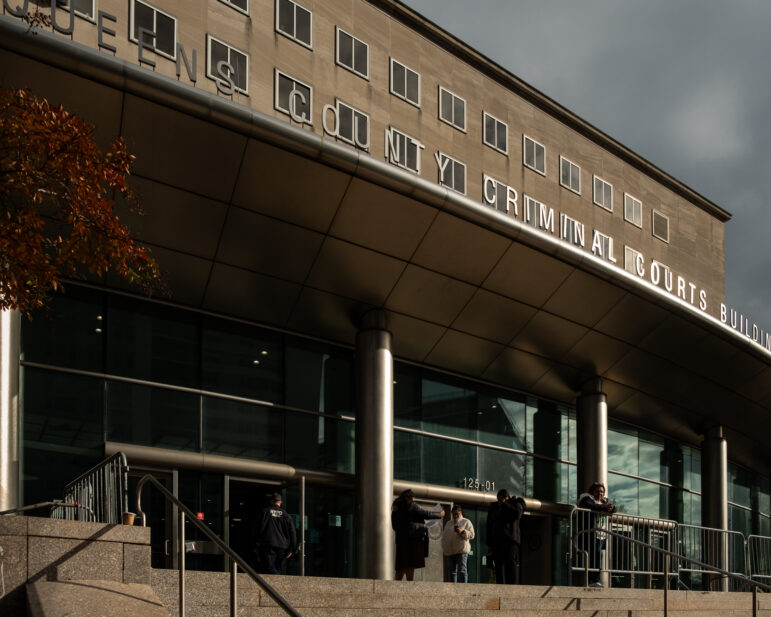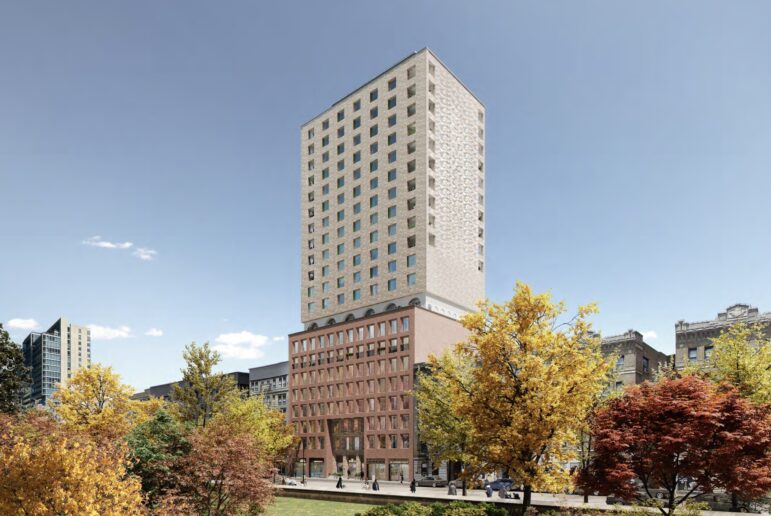In December of 2002, when Mayor Michael Bloomberg announced his first affordable housing plan, the new Yankees and Mets stadiums existed only in the dreams of owners George Steinbrenner and Fred Wilpon. A walk along the Greenpoint-Williamsburg waterfront would show plenty of development potential – but no new high rise apartment buildings. The phrase “Atlantic Yards” had yet to enter the city’s popular lexicon. And it wasn’t until eight days after the mayor unveiled his five-year, $3 billion, 65,000-unit housing plan that the first designs for the Freedom Tower were released.
More than four years later, the mayor’s affordable housing goals have expanded: In late 2005 Bloomberg’s new plan upped his promise to include 165,000 units by 2013 at a cost of $7.5 billion. The city has changed as well: The stadiums, waterfront skyscrapers, new Ground Zero, and Atlantic Yards projects that were mere visions four years ago are now just a few of the major development efforts either underway or in the pipeline. New subway tunnels are being excavated and multibillion-dollar water and sewer projects are going forward, while around the five boroughs a wave of private construction is transforming neighborhoods one parcel at a time.
The development surge is a powerful sign of a strong city economy. But it comes at a price, namely the increasing cost of constructing all those new additions to the city’s skyline and streetscape. Inflation on New York’s major construction projects ran at close to 1 percent per month last year, as steel, copper, and concrete prices – pumped by local demand and shaped by global economic forces like growth in China – continued their five-year climb. That means marquee projects like the Freedom Tower will be more expensive to build. It also means that affordable housing is going to be more costly to create or preserve. The effect of rising construction prices on affordable housing development is explored in greater detail in the first issue of the new quarterly, City Limits Investigates, Hard Costs: The Rising Price of an Affordable New York.
The Department of Housing Preservation and Development (HPD) contends that without raising its subsidies or expanding the plan’s $7.5 billion budget, it can still meet the mayor’s goal. But affordable housing developers, designers, and analysts say that, coupled with swelling land prices, the rising cost of construction threatens the Bloomberg plan. “Construction costs are killing us,” says Paul Freitag, an architect with Jonathan Rose Companies, a builder developing several affordable housing projects in Harlem and the Bronx. “I think it’s particularly tough in the case of affordable housing where you’re looking for public subsidies to fill the gap.”
The impact of higher costs on affordable housing development is complex. While it’s possible that rising prices could limit the number of units produced, subtler effects are more likely. Developers might cut back on the quality of construction or the size of units. “Instead of using brick, we’ll use stucco, or we originally plan to have a community room but now we realize we can’t afford to put that in the project. We wanted ceramic tile in the kitchen, now we’re putting in vinyl tile,” says Drew Kiriazides, housing development director at Pratt Area Community Council. “I think the effect is to reduce the longevity of the development, which leads to higher operating fees in the future. You suffer down the line.”
Even more significantly, rising prices might change who ends up living in affordable housing. Higher costs could alter the income groups that housing developers target. While there’s broad agreement that this risk is real, there are differing views on what the impact will be. HPD worries that moderate-income families—those earning just under $57,000—will be squeezed out. But some developers believe instead that lower-income families will see their share of the affordable housing pool decrease.
The challenge of higher construction costs comes at a time when affordable housing has been identified as one of the city’s most pressing needs. The 2005 federal Housing and Vacancy Survey had 29 percent of New York City households paying more than 50 percent of their income toward rent, an uptick of 3 percent over the 2002 survey. Over those three years, average rents in the city climbed 8 percent while household income slipped 6 percent.
HPD says by keeping a close eye on costs and “value engineering” the projects in its pipeline, it can complete the mayor’s plan on budget. But the New Housing Marketplace Plan itself is only one of the Bloomberg administration policies that affect affordable housing creation. Zoning and economic development also play a crucial role, as do tax incentives like the 421-a program. Looking ahead, Albany and Washington, D.C., could also be important players if housing advocates convince the Spitzer administration and the Democratic Congress to push for more housing assistance to the city.
So far, data is limited on what the mayor’s plan has delivered. An HPD survey of people who occupied units created in fiscal year 2006 shows the agency falling short of its goals to devote more than two-thirds of the new housing to people making less than 80 percent of area median income, or roughly $57,000. But HPD says the survey is an inaccurate indicator, and under its interpretation of the data, it is exceeding its goals.
While City Hall recently celebrated the completion of funding for a third of the target 165,000 units, the number left to be funded is still sizable – more than exist in the whole city of Newark, for example. What’s more, not all units that have been funded have been built: HPD will have to double its annual amount of new construction over the remaining years of the plan to reach its goal. Meanwhile, the steady loss of affordable units as buildings exit the Mitchell-Lama program and other rent stabilization programs threatens to offset any gains made by the mayor’s plan.
Rising construction costs only add to these challenges. Some developers are hoping the Bloomberg administration will re-evaluate its approach given the rising prices. “I think this is a good group of people to have that conversation, but we haven’t had it yet,” ACORN housing director Ismene Speliotis says of HPD and the mayor’s advisers. “They’re struggling to make the numbers work.”







